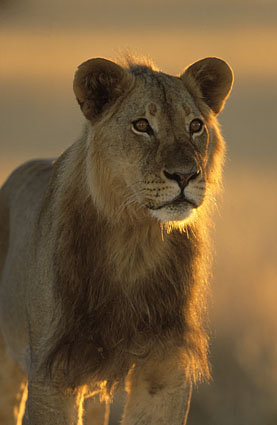Light
 Working with light is undoubtedly the key factor in making attractive and striking images. Even the most impressive bird subjects will look dull and uninteresting when photographed in the flat glare of the midday sun. Although our eyes perceive detail in both the brightly lit and shadow areas in bright harsh light, unfortunately photographic film is unable to record these extremes of contrast satisfactorily. Understanding the limitations imposed by high contrast and poor exposure latitude of film is of paramount importance.
Working with light is undoubtedly the key factor in making attractive and striking images. Even the most impressive bird subjects will look dull and uninteresting when photographed in the flat glare of the midday sun. Although our eyes perceive detail in both the brightly lit and shadow areas in bright harsh light, unfortunately photographic film is unable to record these extremes of contrast satisfactorily. Understanding the limitations imposed by high contrast and poor exposure latitude of film is of paramount importance.
It is of course widely known that the best times to photograph are early and late in the day. Bird photographers need not only to get up with the sparrows but rather well before them to be in position for photography in the magic first hour of sunlight. Both the very early and late in the day sunlight is soft and golden. This gives photographs a warm glow but, more importantly, the lighting is soft and gentle enough to successfully light the subject from any direction. Three basic options are available when choosing the lighting direction for your subject namely sidelighting, backlighting or flat on with the sun directly behind you. Each will give a distinctly different flavour and feel to the subject. Both side- and backlighting tend to produce the most visually striking images whereas flat on lighting is preferable when an accurate documentary picture is required. Sidelighting gives a pleasing depth and texture to the subject. However, it tends to work well only when the sun is very low generally limiting this technique to just the first half hour after dawn and the last half hour before sunset. After that the sunlight and shadow areas of the image have greater contrast than the film can handle. There is a little more leeway when backlighting a subject which is successful for an hour or so of first and last light. Backlighting produces exciting rim lit graphic images and is a technique I like to use whenever the opportunity arises. Be careful though to avoid having the sun shine directly onto the lens as this will produce flare and a misting or softening of the image. After the magic first hour has passed, contrast increases dramatically and I prefer to light a subject flat on with the sun directly behind me. This generally allows for another couple of hours successful photography before conditions become too harsh for even this technique. On sunny days during the summer months, the light is generally too harsh for good photography between 8am and 4pm which I guess means that wildlife photographers must have the longest lunch break of any profession! During winter, the sun's angle is of course lower and the good light lasts for another hour or so. What if the sun does not shine? I often meet other photographers on my travels and am surprised that many tell me they do not even bother to photograph on dull days. I agree that the lower light levels do tend to exclude the possibility of high shutter speeds for action photography. However, fairly bright overcast conditions can provide a marvellous soft light for bird portraits. On cloudy days the light is strongest from mid-morning to mid-afternoon and because the light is diffused, this is the best time to photograph. When on a long photo trip, I actually welcome the odd overcast day as it gives me a break from my regular 4.30am wake up call and the chance to enjoy a leisurely breakfast before starting photography at around 9am! The soft lighting is also particularly suitable for photographing white birds such as egrets as more detail is recorded on the film than is possible in sunny conditions. Top | Previous | Next | Tips Home | Stock Images | Books | Tips | Gallery | FAQ's | Kruger Park | Contact Text and photographs © Nigel Dennis |